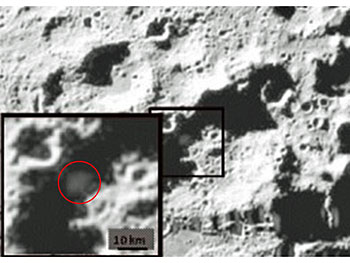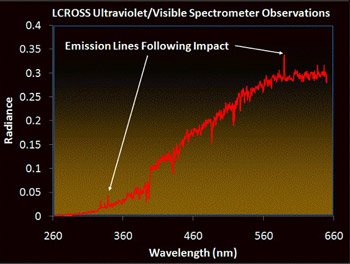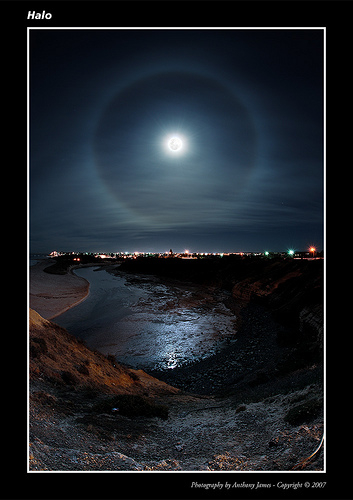Obama’s Speech — Some Cheers, Some Jeers
April 15th, 2010Today President Obama gave a speech at the Kennedy Space Center, announcing his new plan for space exploration in the 21st century. When I first started reading about this upcoming speech a day or so ago, I was a little bit surprised because it didn’t sound as if there were very many new ingredients in it, and yet the press was treating it as news. I guess the point is that this was his first time talking about the space program in public, so that makes it news.
Anyway, many points of the plan were already announced in February:
- Cancellation of the Constellation Program that was originally intended to take astronauts back to the moon by 2020
- Ending the space shuttle program this year or early 2011
- Continuing funding for the International Space Station through 2020
- Increasing NASA’s budget by $6 billion over 5 years (considerably less than the $3 billion per year increase that the Augustine Commission concluded was necessary to keep our human spaceflight program moving toward its goals)
- An increased commitment to robotic spaceflight, including precursor missions to the moon, asteroids, etc.
- Supporting (and in fact depending on) the fledgling commercial launch industry to get us into low earth orbit for the next few years
As far as I could tell, there were two new wrinkles announced today (although they were already leaked to the press earlier this week):
- The Orion crew exploration vehicle, originally part of the Constellation Program, is revived in scaled-back form as an escape vehicle for the space station.
- Work will continue on designing a new heavy-lift rocket with an earlier target date for “finalizing the design,” no later than 2015. (Previously it was 2017 or later.)
The first ingredient sounds to me like a sop to supporters of the Constellation Program, so that we have something to show for the money we spent on Orion. It sounds like converting a Porsche into a garbage truck. When I expressed this opinion to my wife, though, she said, “Well, if you’re going to have an escape pod, wouldn’t you rather have it be a Porsche escape pod?” Point taken.
The second ingredient was also part of the Constellation Program; there was going to be both a heavy-launch vehicle (to ferry heavy stuff into orbit, like the Orion and the moon lander) and a lighter rocket to launch the people. A heavy-launch vehicle is also needed if you want to take the much longer trip to Mars. Obama wants us to refocus our attention on sending humans to Mars, so this part of his plan makes a certain amount of sense. Also, though I’m not anything close to an expert on rocket technology, it seems to me that it’s not too likely that the private sector could build the heavy-launch rocket. Something this big hasn’t been done before (except maybe the Saturn V?) and it will probably take more resources than space companies can command. So it makes sense to take this out of their hands, and have them just focus on the lighter rocket to take humans to orbit.
The rest of the speech was mostly words, not specific commitments, but here are a few things that caught my attention.
First, he said, “after decades of neglect, we will increase investment — right away — in other groundbreaking technologies that will allow astronauts to reach space sooner and more often, to travel farther and faster for less cost, and to live and work in space for longer periods of time more safely… How do we shield astronauts from radiation on longer missions? How do we harness resources on distant worlds? How do we supply spacecraft with energy needed for those far-reaching journeys?” (my italics)
The last two parts should definitely involve going back to the moon, to prospect more thoroughly for water that can be separated into oxygen and hydrogen, for use as rocket fuel. So even if the moon is not a target in Obama’s new agenda, it is still an enabler.
Now here’s a line that made me groan:
“Now, I understand that some believe that we should attempt a return to the surface of the moon first, as previously planned. But I just have to say pretty bluntly here: We’ve been there before.” (my italics)
This was a total “He doesn’t get it” moment for me. As I’ve said before, saying that we’ve seen the moon, just because we have been to six places, fairly close together, on the near side, is like saying you’ve seen the Grand Canyon just because you’ve been to the visitor’s center of the Grand Canyon. Or it’s like going to the Mojave Desert and saying that you don’t need to go the Grand Canyon, because it will just be more of the same. Whatever. The moon is a big and varied place, and we haven’t explored most of it.
Here’s a line that made me cheer:
“Fifty years after the creation of NASA, our goal is no longer just a destination to reach. Our goal is the capacity for people to work and learn and operate and live safely beyond the Earth for extended periods of time, ultimately in ways that are more sustainable and even indefinite.”
Now that part sounds very much like what Paul Spudis has been preaching in his blog. A reorientation away from “sortie missions” and toward sustaining a permanent presence in space, based on the concept of a sustainable space economy.
All in all, there are some good points and some disappointing things in Obama’s plan, but of course in the real world you can’t have everything. The support for robotic missions will be really good for scientists. The human spaceflight program still looks a bit muddled; I don’t think it will satisfy Obama’s critics.
It’s interesting to see that the Apollo astronauts themselves are split. One Apollo 11 astronaut, Buzz Aldrin, was there to lend his support (although there was some joking among the news commentators about whether he was wearing his Dancing With the Stars shoes!). His companion on Apollo 11, Neil Armstrong, signed a letter (with Gene Cernan and Jim Lovell of Apollo 17 and Apollo 13) saying that they were afraid the Obama strategy was the beginning of a “slide to mediocrity” for NASA.
I would say that it all depends on the follow-through. Will Obama continue to devote attention to rebuilding NASA, changing its culture, and refocusing it on sustainable exploration? If so, then maybe the human spaceflight program will end up better, and today’s speech will be seen as a bold step forward. On the other hand, if Obama gives a 26-minute speech and then lets NASA go on its rudderless way, then I’d have to agree with Neil Armstrong.




